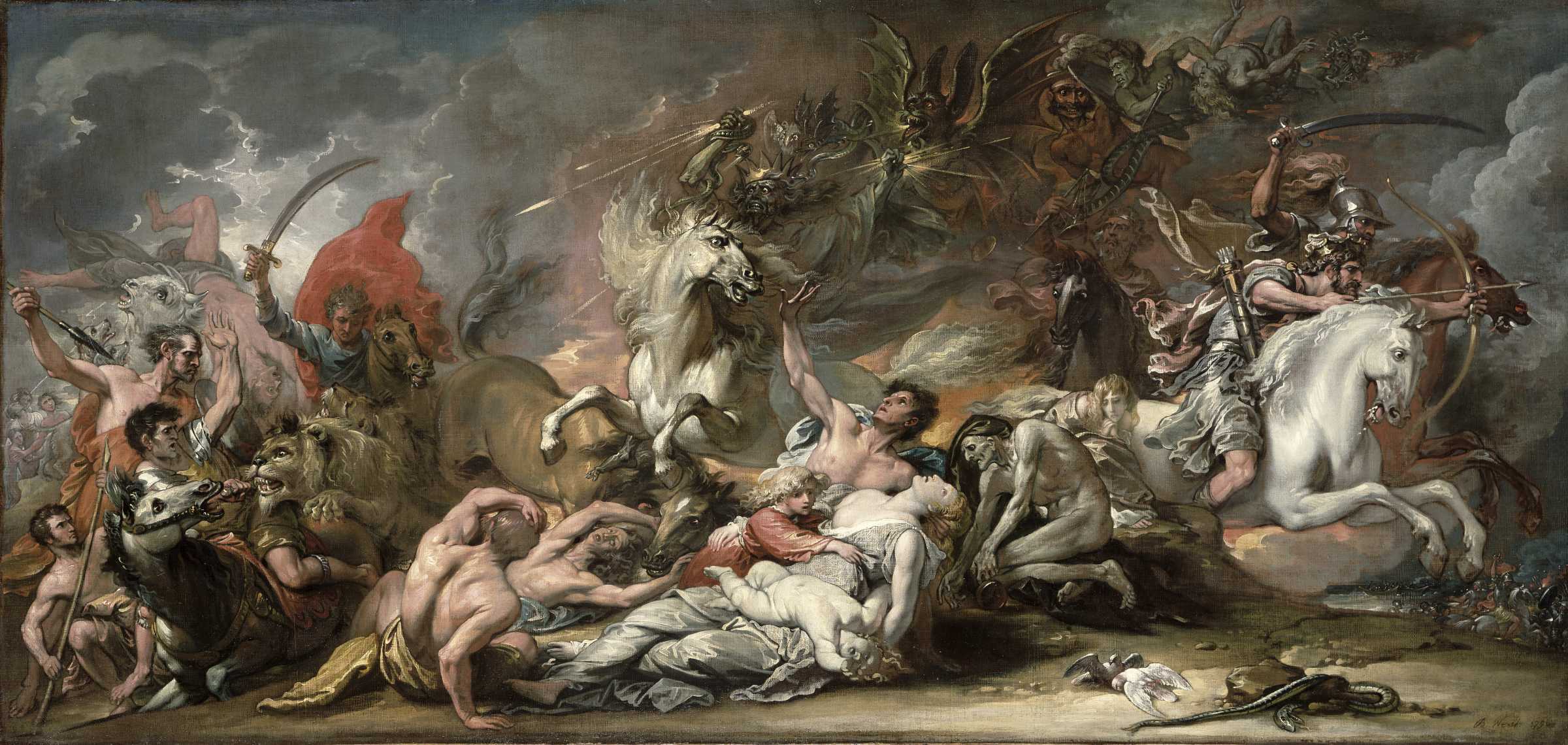The Museum of Fine Arts, Houston, is presenting American Adversaries: West and Copley in a Transatlantic Worldy , an extensive exhibition charting the rise and spectacular success of contemporary history painting in the 18th century through the lives and experiences of two colonial American innovators: Benjamin West (1738–1820) and John Singleton Copley (1738–1815). West and Copley—initially friends and eventually bitter rivals—gained phenomenal fame from their theatrical paintings that romanticized current events and captured the imaginations of the art-viewing public. American Adversaries is on view from October 6, 2013, to January 20, 2014.
American Adversaries: West and Copley in a Transatlantic World traces the ambitious, competitive and highly successful lives of West and Copley through oil paintings, works on paper, sculptures and artifacts. At the core of the exhibition are two paintings that catapulted West and Copley into international fame: West’s The Death of General Wolfe (1770; 1779 version) and Copley’s Watson and the Shark (1778). The paintings have not been presented together in more than 60 years and never before in this context.

John Singleton Copley, Watson and the Shark 1778, oil on canvas, National Gallery of Art, Washington, Ferdinand Lammot Belin Fund. Image courtesy National Gallery of Art

Benjamin West, The Death of General Wolfe 1779, oil on canvas, Ickworth, National Trust, Suffolk. Hamilton Kerr Institute, Fitzwilliam Museum, University of Cambridge
Both born in the same year (1738) in the American Colonies of Pennsylvania and Massachusetts, Benjamin West and John Singleton Copley crossed the Atlantic in pursuit of international fame and fortune. London, the cultural and political capital of the empire, attracted and swayed both artists to stay to develop their careers as history painters and neither returned home to America.
West and Copley established a new genre of painting known as contemporary history painting with The Death of General Wolfe and Watson and the Shark. These dramatic large-scale canvases featured compositional elements derived from antique and Old Master sources, yet instead of portraying biblical, mythological or literary heroes, they depicted real people from contemporary life. This exhibition examines these paintings and the period in which they were painted to animate a past that is unfamiliar to many today. It restores the dynamism and modernity of this particular artistic moment as it happened, rather than through the lens of what we later have come to know. These works point to a world informed by the powerful agency of the Iroquois (Haudenosaunee) Confederacy in the Great Lakes region; the scientific and imperial exploration of the seas; the rising role of the media and its relationship to history painting; and the stagecraft involved in managing the perception of a successful artistic career in 18th-century London. In the exhibition, the two key paintings are joined by works of art from all over the Atlantic World, which give them greater context and meaning.

A fully illustrated catalogue, published by the Museum of Fine Arts, Houston, distributed by Yale University Press and designed by Studio Blue, accompanies the exhibition and features essays by international scholars.
From an informative review: (image added)
One painting by West deserves its own paragraph. Death on the Pale Horse (1796)

Benjamin West, Death on the Pale Horse 1796, oil on canvas, Detroit Institute of Arts, USA / Founders Society Purchase, R.H. Tannahill Foundation fund. Detroit Institute of Arts, USA / The Bridgeman Art Library
just demands that you stare at its ghastly shapes for several minutes, there’s even a couch nearby. A little larger than a sideways movie one-sheet the images conjure rapture and death. At the bottom of the right side are a dead bird and snake. At the center is a naked man with his right arm extended to the heavens. All around him is a cavalcade of death, warriors on horseback chased by demons, innocents about to be torn apart by wild beasts. The eyes of all the animals and humans (and demons) seem to be glistening with either fright or delight. Maybe West was aware of his contemporary Goya since some of the imagery would be appropriate in that Spaniard’s work, although there’s also the possibility that it was West who influenced Goya.
An extremely informative review with many, many images, each with a story

John Singleton Copley, Head of a Negro, 1777-78, oil on canvas, Detroit Institute of Arts, Founders Society Purchase, Gibbs-Williams Fund

Gilbert Stuart, Joseph Brant (Thayendanegea), 1785, oil on canvas, the British Museum, London. The Trustees of the British Museum

John Singleton Copley, Mr. and Mrs. Ralph Izard (Alice Delancey), 1775, oil on canvas, The Museum of Fine Arts, Boston, Edward Ingersoll Brown Fund